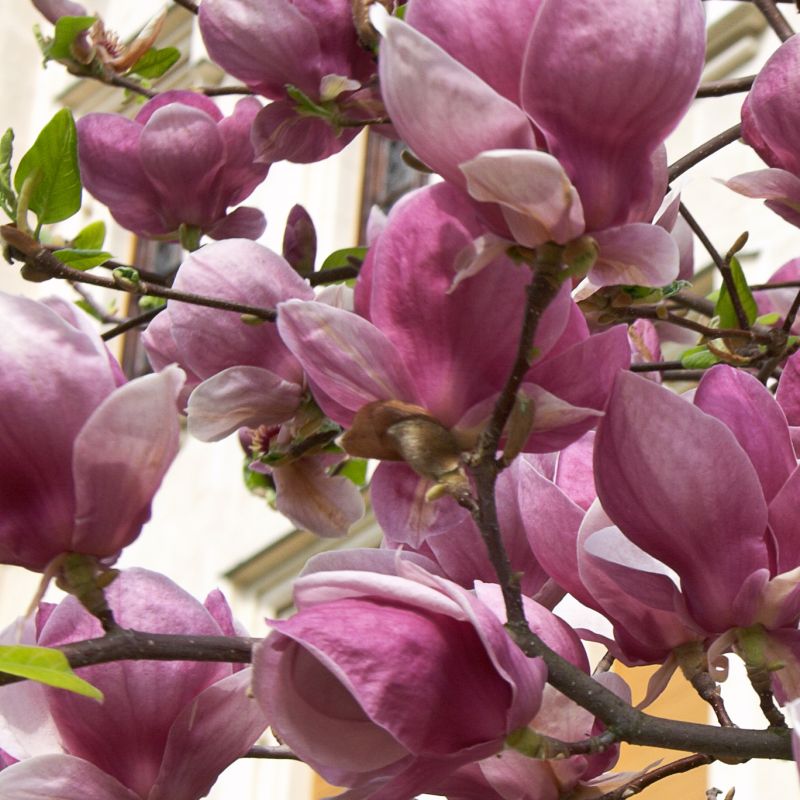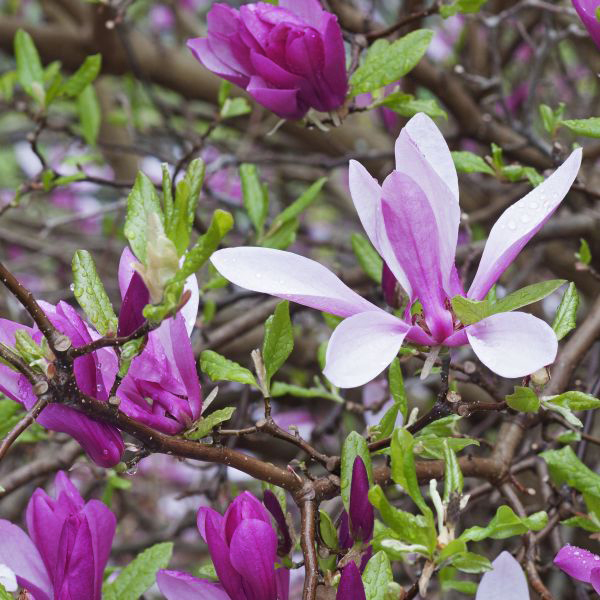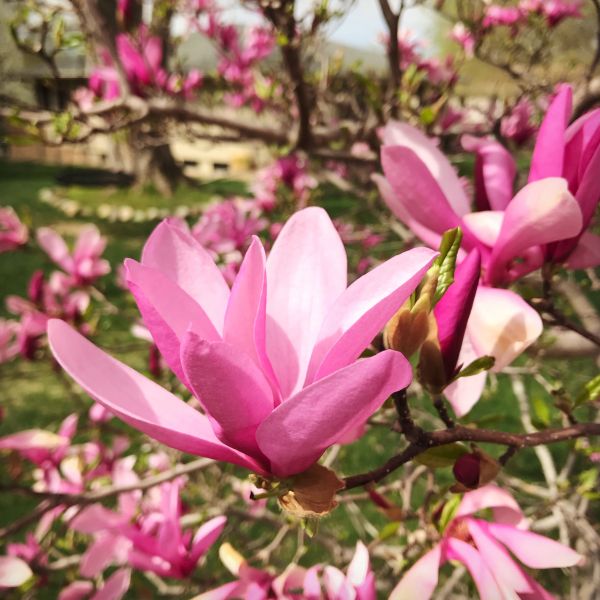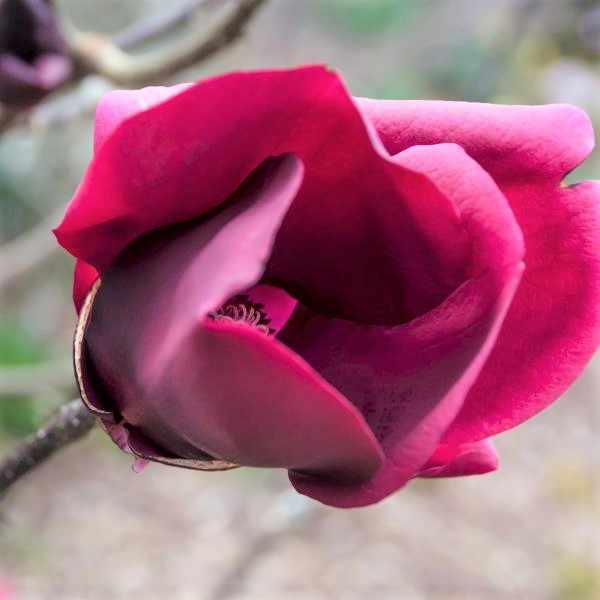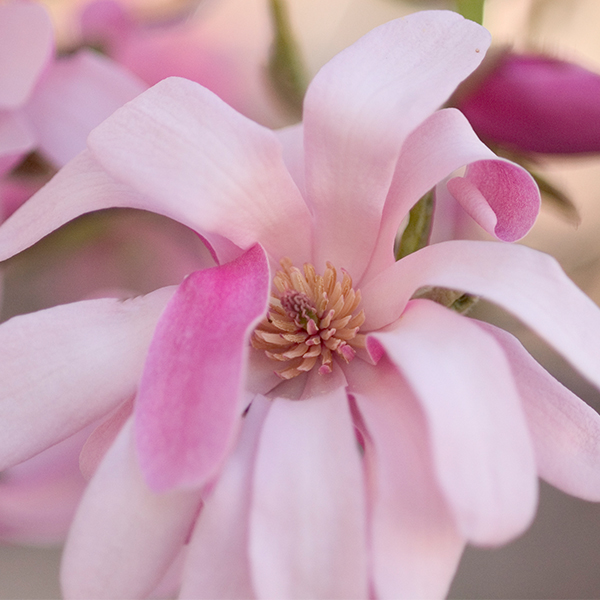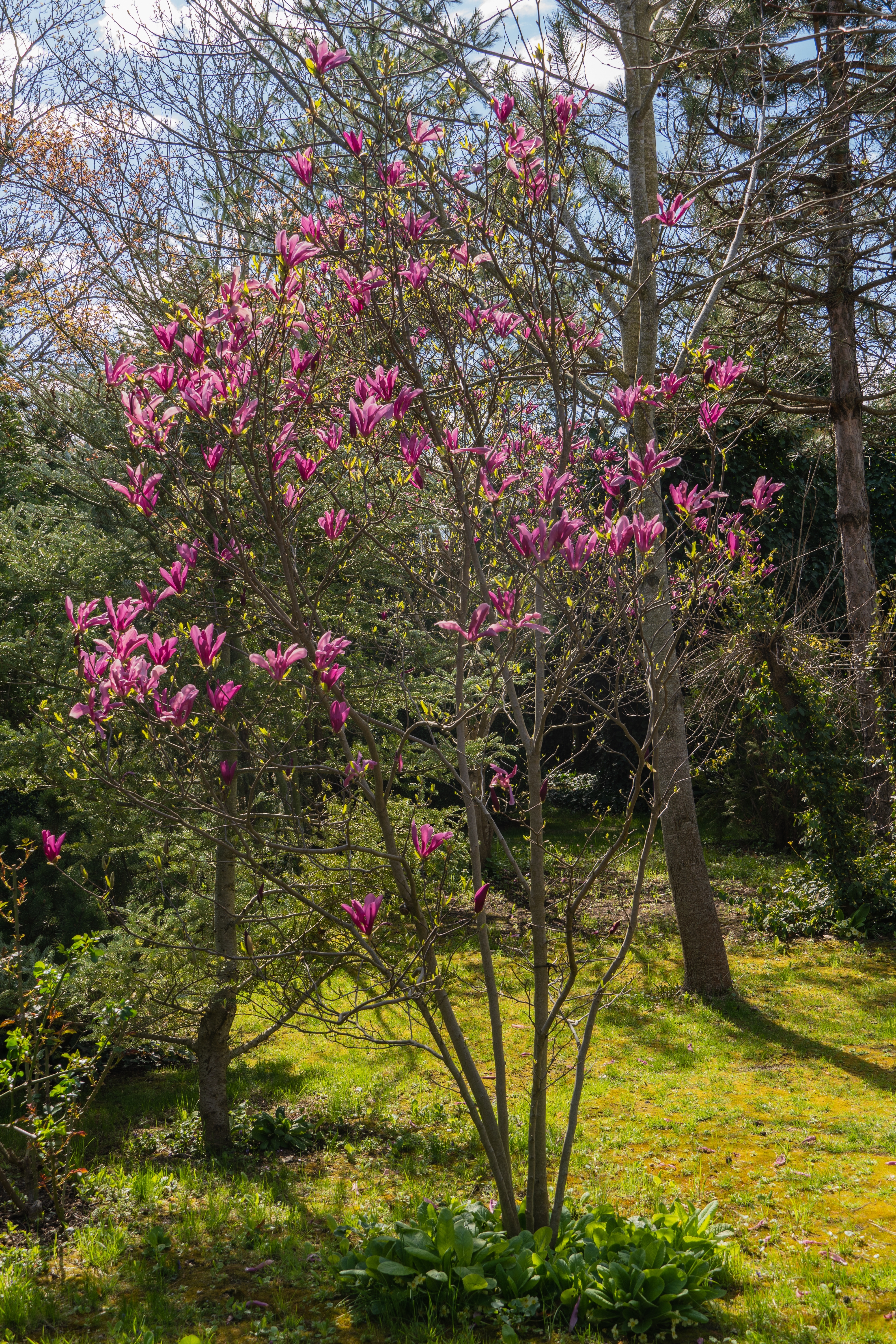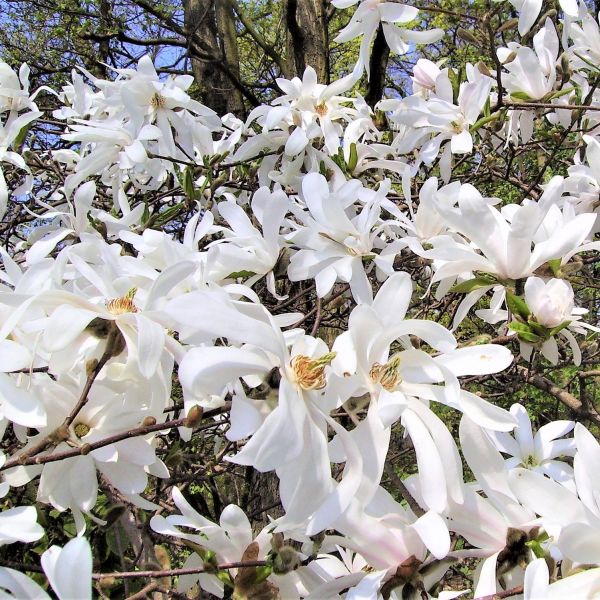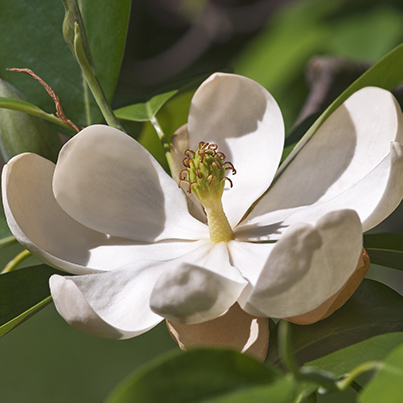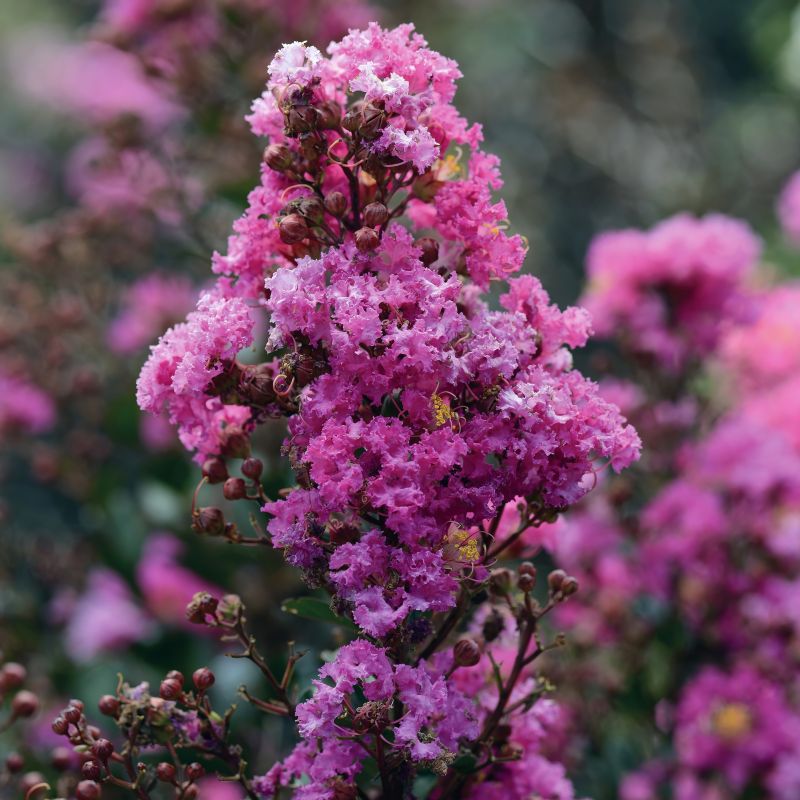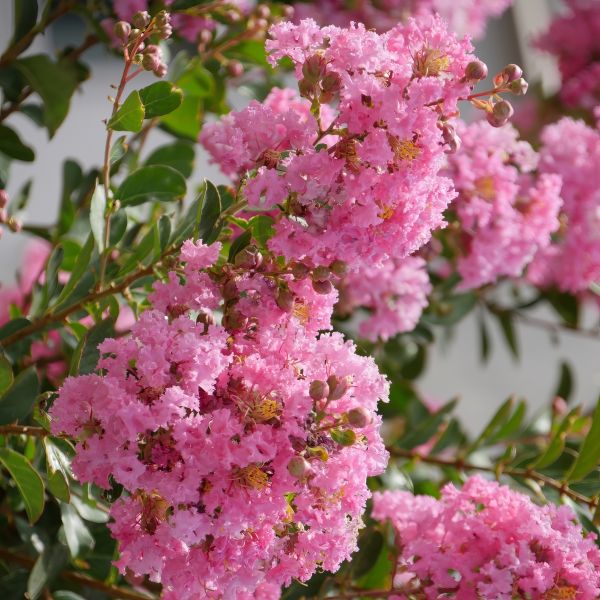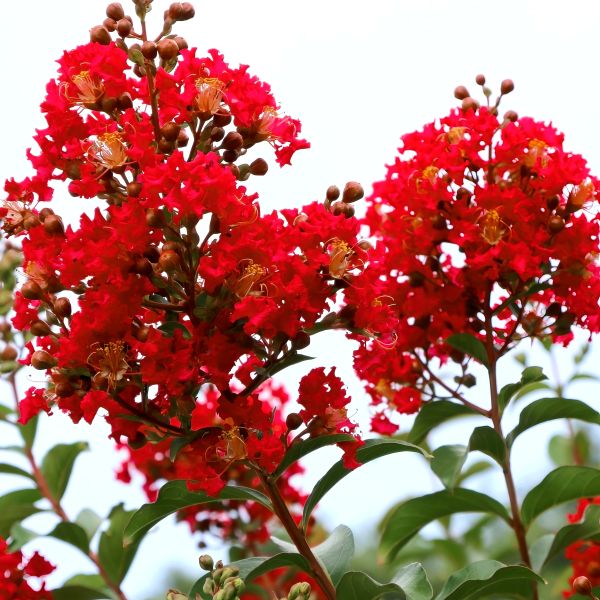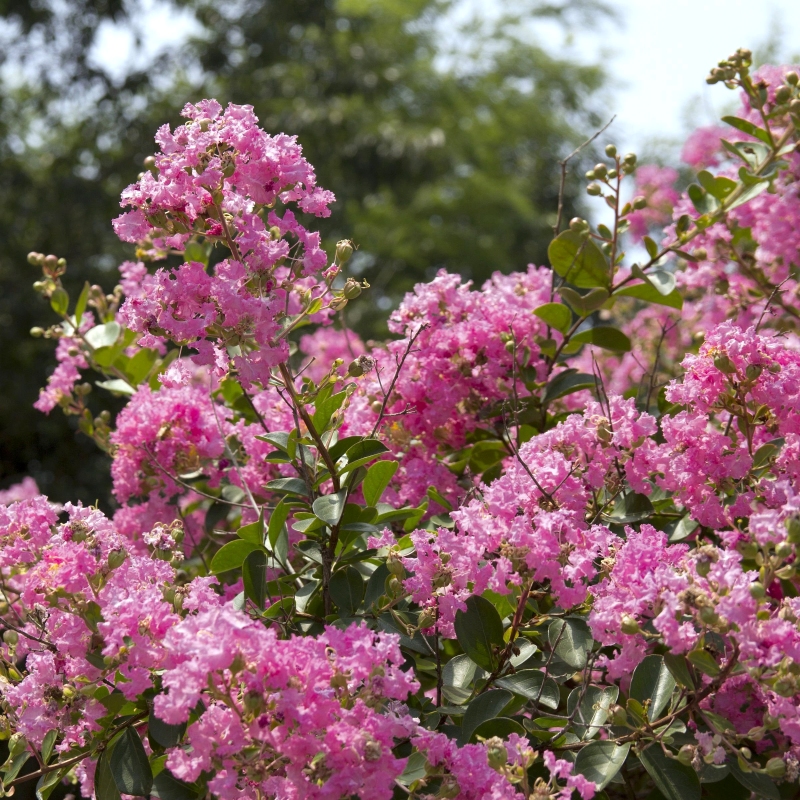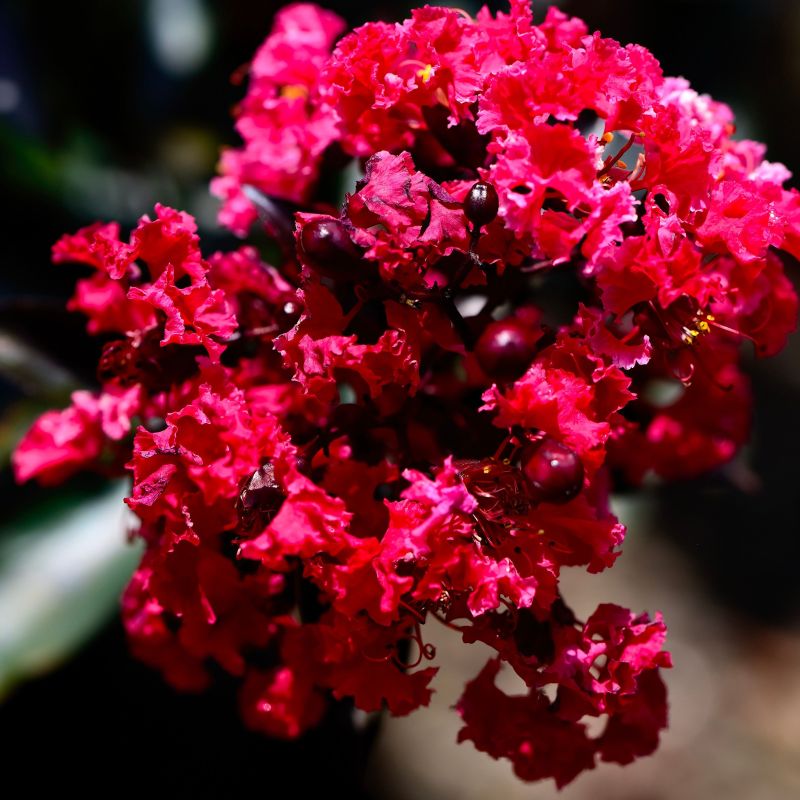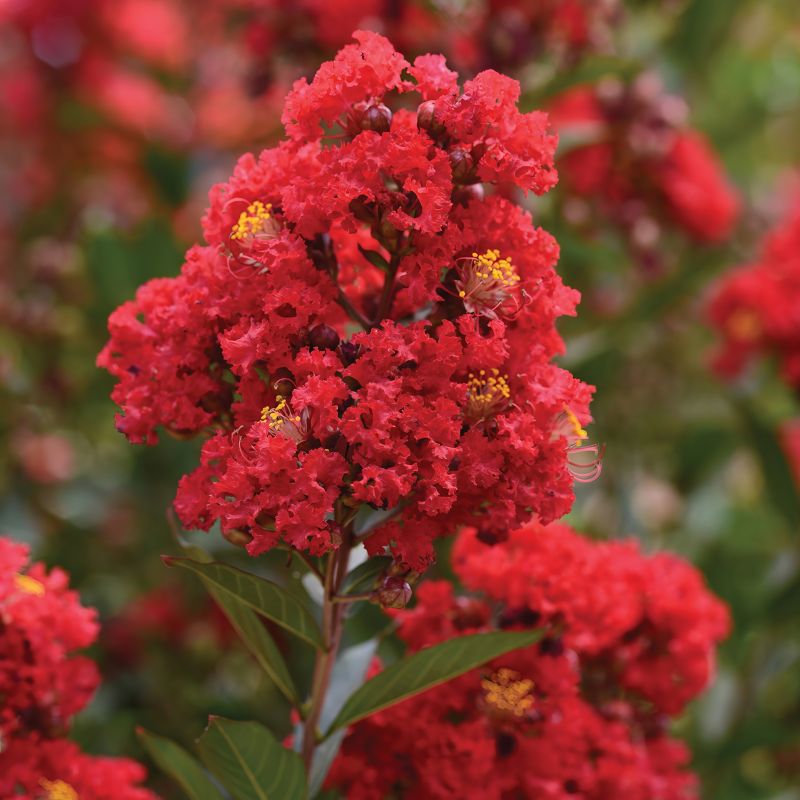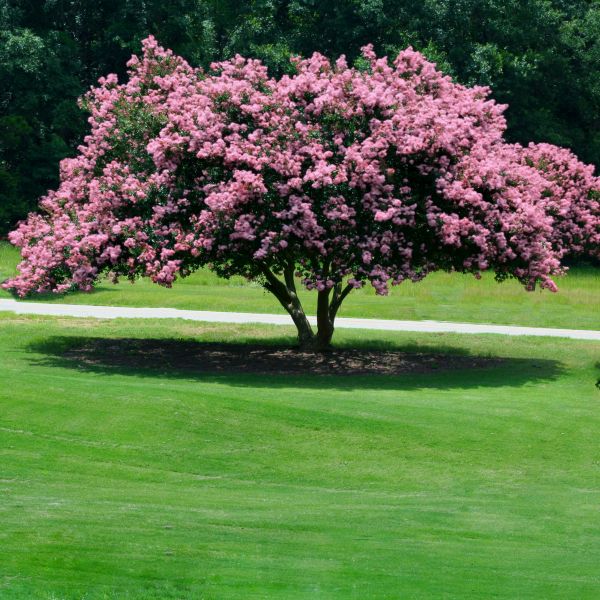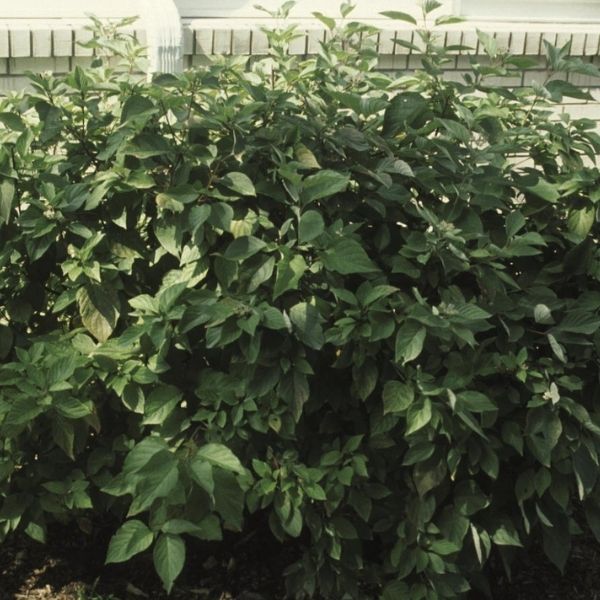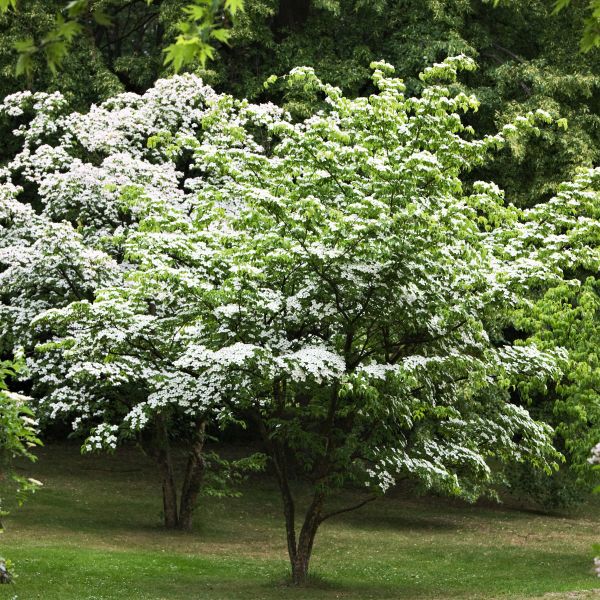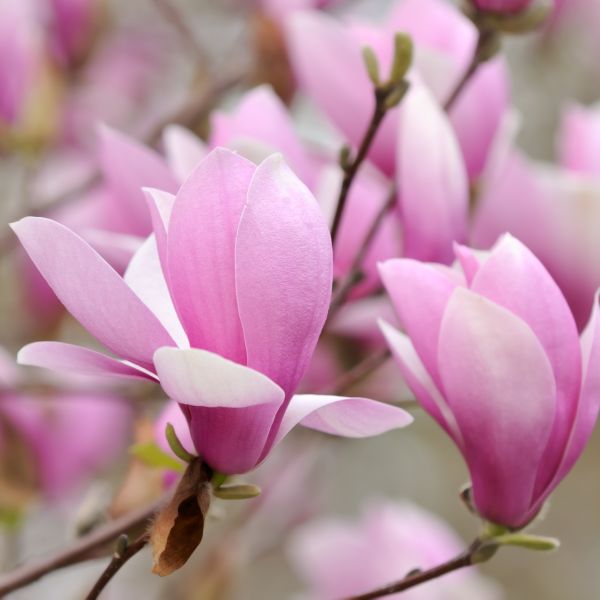
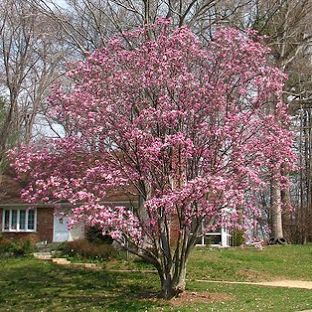
Jane Magnolia
Magnolia x 'Jane'
19 reviews
Jane Magnolia
Magnolia x 'Jane'
19 reviews
- Fragrant white flowers in spring
- Compact size perfect for small yards
- Drought-tolerant and low-maintenance
- Recommended by landscape designers for optimal fit in real yards
$94.00
$135.00
30% Off
- Ships to 43215 in 3 to 7 days
- Free Shipping Over $150
- Plant Arrival Guarantee
- In Stock
- Free Plant Consult
$200 - Landscape-Approved: Every Plant We Sell Comes With Design Expertise Behind It
2.5 Gallon 2-3 Feet Multi Stem
Not just beautiful - intentionally selected by ShrubHub's 3D landscape design team to fit real-world spaces and maximize yard potential.
Why Jane Magnolia?
Jane Magnolia (Magnolia x 'Jane') is a stunning deciduous shrub that captivates with its exquisite flowers. This hybrid magnolia tree features vibrant, purplish-red blooms that appear in early spring before the leaves emerge. Its compact size makes it suitable for smaller spaces while adding a pop of color to any landscape. Jane Magnolia thrives in full sun to partial shade and prefers well-drained soil. It's a low-maintenance plant that adds beauty and elegance to any garden.
People who loved this plant also bought
Sunlight
Jane Magnolia plants prefer full sun to partial shade, requiring at least 6 hours of direct sunlight per day for optimal growth and blooming.
Watering
The Jane Magnolia has average watering needs, requiring regular watering to keep the soil moist but not waterlogged. It is important to avoid over-watering or allowing the soil to dry out completely.
Fertilizing
The fertilizer requirement for Jane Magnolia is a balanced, acidic fertilizer formulated for acid-loving plants. Fertilizing in early spring and late summer with a slow-release, acidifying fertilizer will help promote healthy growth and blooming.
Jane Magnolia (Magnolia x 'Jane')
The Jane Magnolia, scientifically known as Magnolia x 'Jane', is a beautiful deciduous shrub that is highly valued for its stunning display of tulip-shaped, fragrant flowers. This compact cultivar is a cross between the Lily Magnolia (Magnolia liliiflora) and the Cucumber Magnolia (Magnolia acuminata).
Jane Magnolia typically grows to a height of 10 to 15 feet, with a similar spread. Its growth habit is upright and multi-stemmed, forming a dense rounded shape. The dark green, elliptical leaves provide an attractive backdrop for the blossoms.
In early spring, before the leaves emerge, the Jane Magnolia is covered with an abundance of eye-catching flowers. The flowers are generally a vibrant pink-purple, but can also range from pale pink to deep reddish-purple. Each bloom measures about 3 to 4 inches in diameter and has 9 wavy-edged petals. The flowers produce a lovely, fruity fragrance that adds to the overall appeal.
This Magnolia variety thrives in full sun to partial shade, preferring moist, well-drained soil. It can tolerate a range of soil types, including sandy, loamy, or clay soils. Once established, the Jane Magnolia is relatively low-maintenance, requiring minimal pruning.
The Jane Magnolia is an excellent choice for smaller gardens, as it adds vibrant color and beauty without taking up too much space. Its compact size also makes it suitable for container planting. Additionally, this shrub attracts various pollinators, such as bees and butterflies, enhancing your garden's ecological diversity.
Overall, the Jane Magnolia is a spectacular flowering shrub that delights with its abundant, fragrant blooms and compact growth habit. Its early spring display is sure to make a statement in any landscape, bringing a touch of elegance and beauty.
Plant Information:
| Botanical Name: | Magnolia x 'Jane' |
| USDA Zones: | 4 - 8 |
| Water: | Moderate |
| Exposure: | Full Sun |
| Soil Needs: | Widely Adaptable |
| Mature Height: | 10 - 15 feet |
| Mature Spread: | 8 - 10 feet |

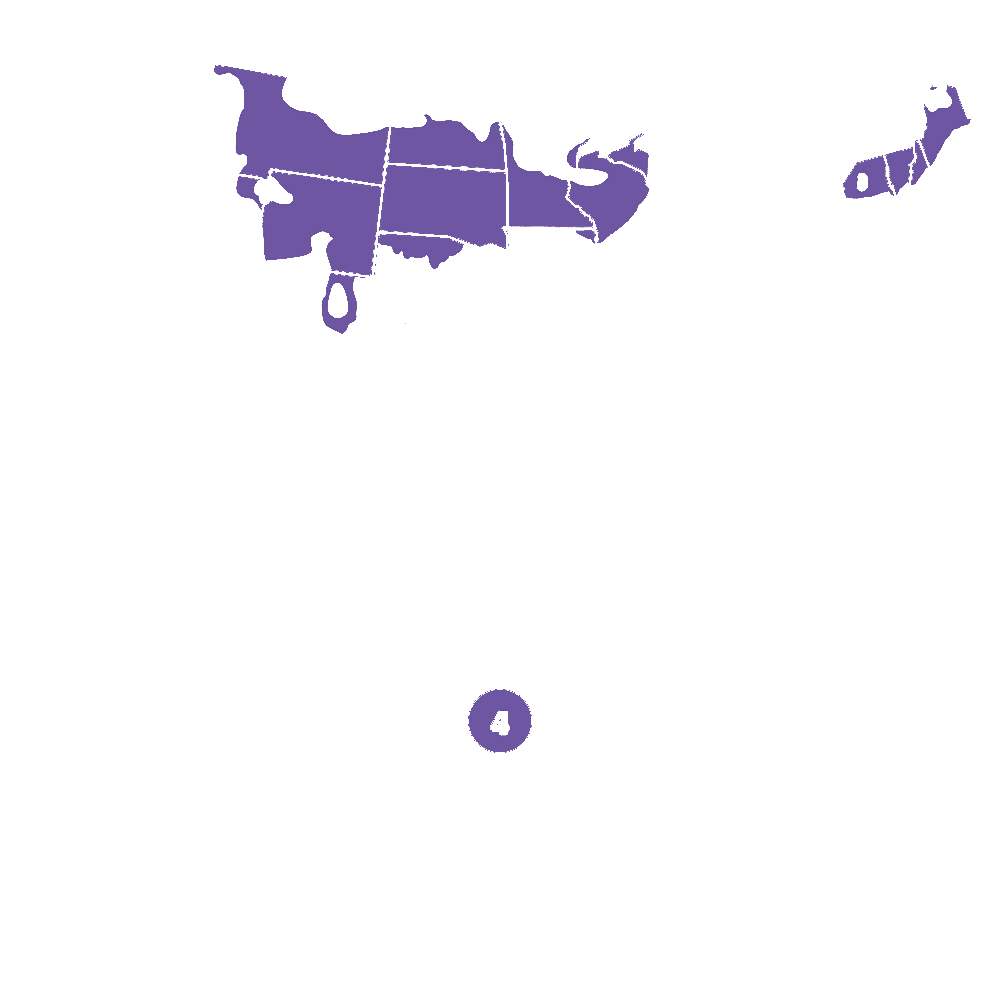
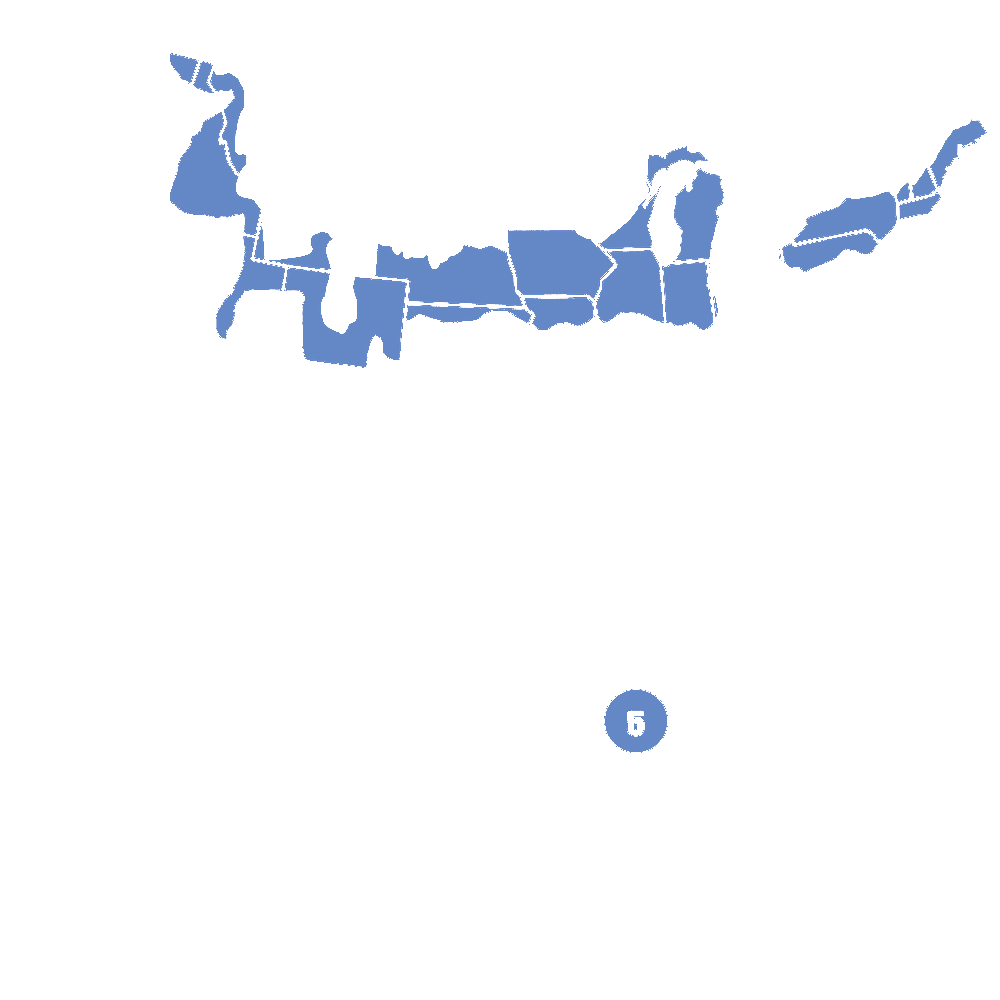
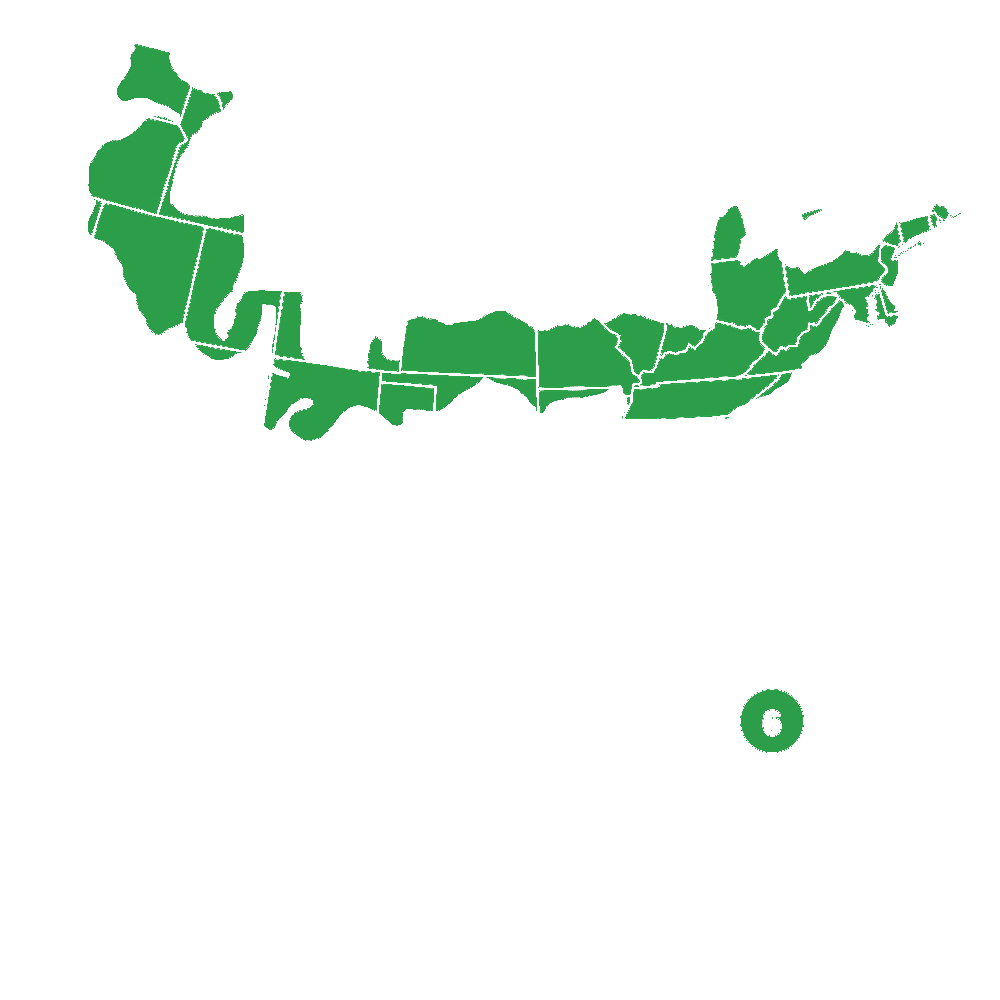
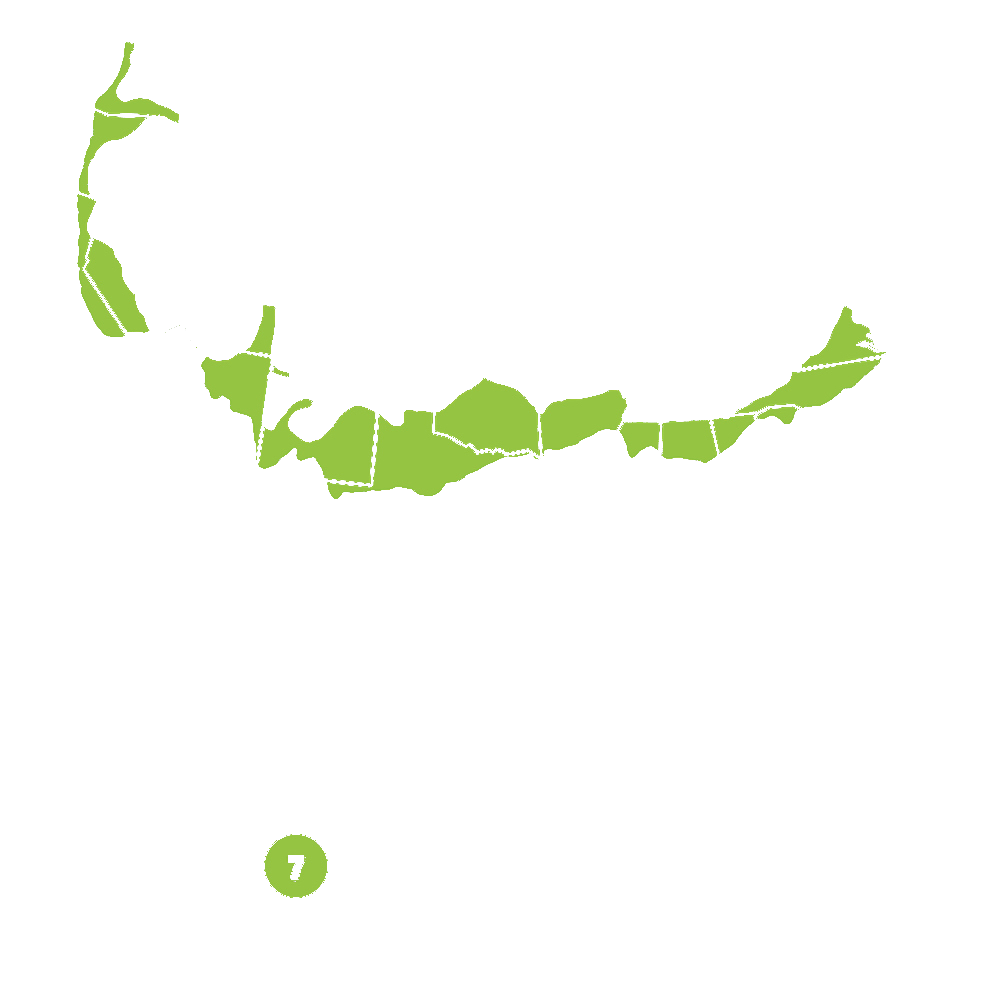
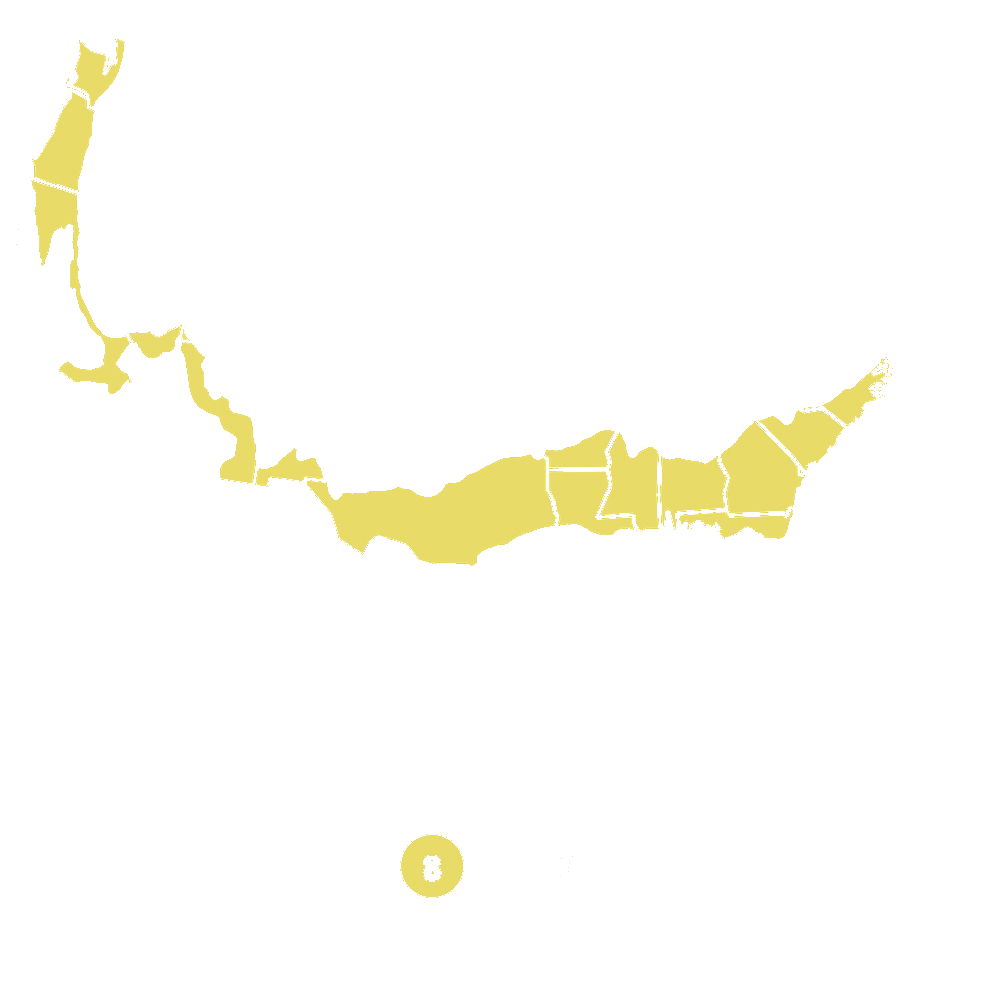
Pollination Info
Pollination Info for Jane Magnolia (Magnolia x 'Jane')
The Jane Magnolia (Magnolia x 'Jane') is a hybrid magnolia tree that belongs to the Magnoliaceae family. It is a small, deciduous tree that typically grows up to 10-15 feet tall with a rounded, compact form. Here is some detailed information about its pollination requirements:
Flower Characteristics:
The Jane Magnolia produces beautiful, fragrant flowers that emerge in early spring before the leaves. Each flower is cup-shaped, with fuchsia-purple outer petals and white insides. The blooms are about 4-6 inches wide and have a pleasant aroma. The flowers attract bees, which are the primary pollinators for this tree.
Pollination Requirements:
The Jane Magnolia is not self-fertile and requires cross-pollination with another magnolia variety to set fruit. To ensure successful pollination and fruit production, it is recommended to plant it near another compatible magnolia tree. Good pollinator choices for the Jane Magnolia include other magnolia cultivars like 'Ann', 'Betty', 'Pinkie', or 'Randy'.
Pollination Process:
Bees are the primary pollinators attracted to the Jane Magnolia's fragrant flowers. When bees visit the flowers in search of nectar, they inadvertently pick up pollen from the stamens (male reproductive organs) of one flower and transfer it to the pistil (female reproductive organ) of another flower. This transfer of pollen enables fertilization and subsequent fruit development.
Fruit Development:
If successful pollination occurs, the Jane Magnolia will develop cone-like fruits known as follicles. Each follicle contains red seeds and matures in late summer. The fruits add visual interest to the tree but are not usually a significant ornamental feature.
Additional Notes:
It's essential to note that magnolia trees, including the Jane Magnolia, generally take a few years to mature and start flowering. It is recommended to provide the tree with adequate sunlight, well-drained soil, and regular watering for optimal growth and flowering.
FAQ
Jane Magnolia (Magnolia x 'Jane')
Frequently Asked Questions
1. What is a Jane Magnolia?
Jane Magnolia, scientifically known as Magnolia x 'Jane', is a deciduous hybrid shrub that belongs to the Magnoliaceae family. It is a cross between Magnolia liliiflora and Magnolia stellata. Jane Magnolia is renowned for its attractive, tulip-shaped flowers that bloom in early spring before the leaves appear.
2. How tall does a Jane Magnolia grow?
A Jane Magnolia typically grows between 10 and 15 feet in height, with a spread of approximately 8 to 10 feet. However, its growth can vary depending on the environmental conditions and care provided.
3. Can I grow a Jane Magnolia in a container?
Yes, Jane Magnolias can be grown in containers. It is essential to select a large enough container to accommodate its root system and provide proper drainage. Be sure to use a high-quality potting mix and regularly monitor the moisture levels to ensure the plant's health.
4. When does the Jane Magnolia bloom?
The Jane Magnolia typically blooms in early spring, usually before its foliage emerges. Its beautiful flowers display a mix of purple and pink hues, adding a vibrant touch to the landscape. The blooming period usually lasts for a few weeks.
5. What are the ideal growing conditions for a Jane Magnolia?
Jane Magnolias prefer well-draining soil that is rich in organic matter. They thrive in full sun to partial shade, with a preference for morning sunlight. Adequate moisture and regular watering are crucial, especially during the initial stages of growth. Protect the plant from strong winds, as it can damage the delicate flowers.
6. How do I prune a Jane Magnolia?
Pruning a Jane Magnolia is generally not necessary unless you want to shape or control its growth. If required, it is best to prune immediately after flowering to avoid cutting off potential flower buds. Remove any dead or damaged branches and maintain a balanced shape. Avoid excessive pruning as it may reduce the number of blooms in the following season.
7. Does a Jane Magnolia require any special care?
While Jane Magnolias are relatively low-maintenance, they benefit from basic care practices. Ensure the soil remains moist, especially during hot and dry periods. Applying a layer of organic mulch around the base of the plant helps retain moisture and suppress weeds. Regular fertilization with a balanced slow-release fertilizer can promote healthy growth.
8. Are Jane Magnolias susceptible to any diseases or pests?
Jane Magnolias are generally resistant to many common pests and diseases. However, they can occasionally be affected by scale insects, aphids, or fungal issues like powdery mildew. Regular inspections, maintaining good air circulation, and promptly addressing any pest or disease problems can help keep the plant healthy.
Planting & Care
Planting and Care for Jane Magnolia (Magnolia x 'Jane')
Planting:
- Choose a location with well-drained soil and full to partial sun exposure.
- Dig a hole that is twice the size of the root ball and equally deep.
- Remove the magnolia plant from its container, carefully loosening the roots if they're tightly bound.
- Place the plant in the hole, making sure it sits at the same level as it was in the container.
- Backfill the hole with soil, firming it gently around the base of the plant.
- Water the newly planted magnolia thoroughly to settle the soil.
Care:
- Water the Jane Magnolia regularly, especially during dry periods in the first year after planting.
- Mulch around the base of the plant to conserve moisture and suppress weeds.
- Prune the magnolia during late winter or early spring to remove dead or damaged branches and maintain its desired shape.
- Fertilize the Jane Magnolia in early spring with a balanced slow-release fertilizer formulated for flowering shrubs.
- Avoid excessive nitrogen fertilizer, as it may promote excessive foliage growth at the expense of flower production.
- Monitor for common pests and diseases such as scale insects, aphids, and powdery mildew. Treat if necessary with appropriate insecticides or fungicides.
- Protect the plant during extreme winter weather by covering it with a frost cloth or burlap if necessary.
By following these planting and care guidelines, your Jane Magnolia should thrive and provide beautiful blooms for many years to come!
Check Out These Verified Customer Reviews:
Customer Reviews
4.7 out of 5 based on 19 reviews
Thank you! Your review has been submitted.
Received in perfect condition.
The Jane Magnolia plant is a wonderful addition to my garden. I am very satisfied with my purchase.
My Jane Magnolia arrived in great condition and looked just as beautiful as it did online. The quality surpassed my expectations and the website was user-friendly. Shipping was fast, but customer service could be more responsive.
Item has been added to your cart.



